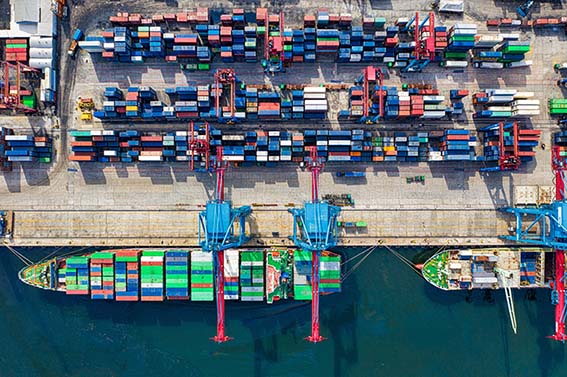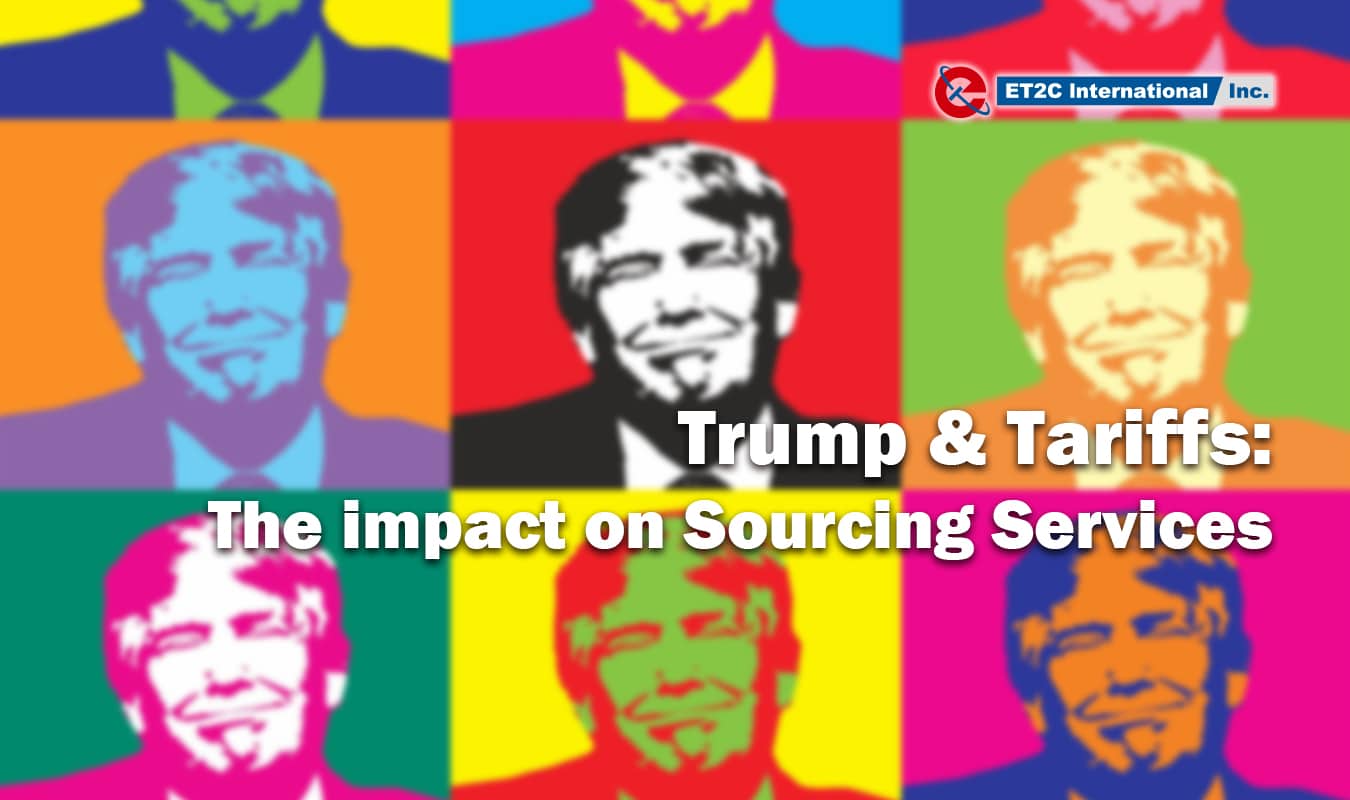Trumps & Tariffs: the Impact on Sourcing Service
Uncertainty is never a good thing for business. Global Trade is in a state of flux; the US tariffs on China are the most prominent driver. US companies are looking to get to grips with the complexities of shifting their supply base at short notice (if any at all) and what the resultant impact will be on both their business and their consumer.
As an Asian sourcing expert, we have been looking at some of the main issues of this trade war, the impact that they are already having and possible ways forward.
Overview
As of 1st September, President Trump levied an additional round of tariffs on the remaining $300 billion dollars of imports from China in addition to the 15% tariffs already levied on $250 billion of imports. The new tariffs come into effect from 1st September through 15th December (with 5% more on prior tariffs on 15th October). In contrast to the earlier rounds of tariff escalation, this round of tariffs largely impacts consumer products and, as a result, is expected to be more visible on the US Consumer.
Companies are being forced to make difficult decisions about the $ value that consumers are willing to pay for a product and how much of this effective tax the supply chain can absorb. However, it is not just the % increase that is impacting companies’ bottom lines but also the arbitrary and volatile nature of the timing of the tariffs. It is the uncertainty that is causing paralysis in the decision-making process as to any China sourcing strategy through the end of 2020.

Current Consequences
In short, the cost of purchasing products from China has gone up for US companies. American consumerism has long surfed the wave of Chinese outsource manufacturing, and now that reef is crumbling.
Aside from cost uplifts, as expected, companies are looking at their current sourcing strategies and looking for alternative countries that can supply the products. Vietnam sourcing strategies have certainly been a prominent consequence over the past 18 months. In some instances, companies are even leveraging loopholes in trade law with reports that Cambodia is being used to channel Chinese exports through to mitigate the tariffs.

There is no doubt that alternate markets will help reduce tariffs (for now, Trump has already suggested other markets are in his ‘cross hairs’). But this shift does little to address some of the complexities of the incumbent Supply Chains already in place for years. Other factors like raw material availability, labour efficiencies, lead times, logistics, price points and capacity all need to be looked at to understand the net result. There is also no benefit in breaking up a relationship developed over years when there is no guarantee that the tariffs will be a permanent fixture in the medium term.
Uncertainty strikes again.
A good example of some of this complexity can be illustrated through the Shoe Manufacturing industry. With limited price elasticity, the industry has been subject to the latest round of 1st September tariffs and is facing the additional tranche 4 tariffs later this year. As all you ‘shoe dogs’ out there will know, the industry has been centered around China for a considerable period of time (with Taiwan) and although Vietnam continues to take market share from China, China is still a dominant player.
To put this in perspective, according to recent statements made by the Footwear Distributors and Retailers of America (“FDRA”), 57.5% of the world’s production of shoes is still made in China. To look at this another way, the combined shoe manufacturing capacity outside of China makes up less than 75% of China’s total capacity. Although the US is only one market, therein lies the problem with the current global manufacturing picture. There is no immediate fix to these tariffs.

It is also true that these alternate markets may not necessarily be as cost effective. Again, looking at the shoe industry, the FDRA has calculated that the average landed cost of footwear from all manufacturing jurisdictions in 2018 was $10.79. From China, the average cost was $8.26 and by comparison Vietnam (with an 18% market share) was $13.40. These may only be averages and may therefore ignore variances in qualities, styles and volumes but the point is well made. It is not necessarily the case you will get net product cost savings, even with tariffs being imposed.
A Way Forward
Even with this uncertainty and disruption, US companies should be looking to create increased flexibility within their supply chains to account for multiple potential outcomes. The ultimate aim is to have multiple sites in different jurisdictions that have been onboarded and can be ‘turned-on’ as required. In certain sectors this will be hard, and perhaps even impossible.
Recommendations:
Our sourcing service team are already working with our US clients to mitigate the current disruption whilst also identifying opportunities to limit the cost increases where possible. Some of our recommendations include:
- Cost reductions due to RMB Devaluation and sharing tariff uplifts where possible, remembering that there is another side to this coin should tariffs be removed or there is appreciation in RMB value vs the Dollar;
- Identify alternative markets and look to onboard substitute suppliers;
- Continue the dialogue with China suppliers with possible re-engineering an option for product cost reductions;
- Increase orders/stock draw down to ship in pre-tariffs (Oct 15th and December 15th at time of writing);
- Work with a partner who has reached across the region and can enhance the resource applied;
- Increase price points in advance of tariffs to counter any margin erosion on the buy-side.
Summary
One thing is for certain and that is that the Trade War is not in the economic interests of either country or the respective consumers. In both economies, there are signs that the Trade War is having an impact on the GDP and growth targets.
The next 3-6 months and the lead up to the Presidential Election in the US are going to determine whether companies are willing to “gamble” on disrupting their existing well-established relationships in China and commit to alternate locations. There are rumours that a ‘deal’ is in the works with a simplified agreement to be in place by the year-end giving both economies a bounce.
At ET2C, as a product sourcing service provider, we are constantly looking to provide tangible solutions to our clients and are already helping our US clients with their sourcing strategies during this period of disruption. Please contact us for more information on how we can help you.


